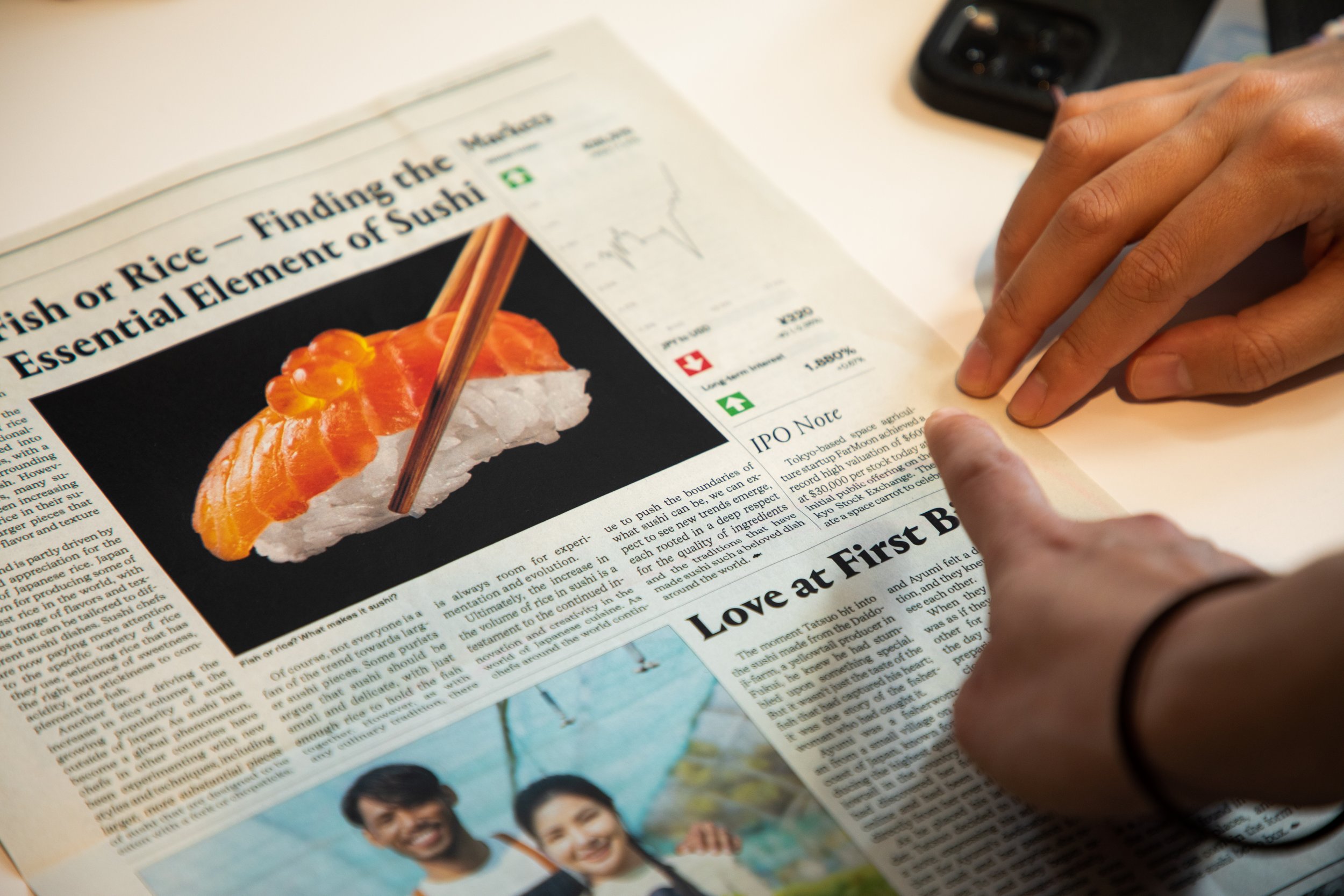Food Security in Japan: The Future of Sushi
Our sushi set paired with the newspaper we produced. The goal of these artifacts was to help our audience explore their own potential solutions for food security in a future Japan.
A workshop participant examines labels on the sushi packaging that list the amount of CO2 produced.
Workshop participants inspect our package of sushi and find clues like a returnable metal package and dehydrated wasabi in a paper sachet.
Participants hunt for clues about the future world in the newspaper we designed.
A rough, early model of an imagined city engaged in self-sufficient, balloon-based farming. Models like this helped us imagine the world in which we built our final artifacts.
Designing to Produce Questions, not just Answers
To explore the future of food security in Japan, my team at IDEO created a set of artifacts that aimed to engage a workshop audience in imagining their own solutions to the problems of the future. To do this, we experimented with using “futuring” techniques as opposed to our normal design thinking strategies. We decided to pick a single type of food — sushi — as the showcase to explore how food might be produced, distributed, and consumed in the year 2043.
Food security is a potential concern for Japan which currently relies on imports for a huge amount of its food supply. After speaking with experts in agriculture and logistics — and after going fishing ourselves — we began by imagining a world in which Japan would be forced by geopolitical and climate reasons to become totally self-sufficient. Compounding these problems is Japan’s declining population which would result in a smaller workforce to support food production.
In our imagined world of a completely isolated and climate-impacted Japan, we began rapidly building stories, prototypes, and artifacts that might allow a smaller population of future people to continue to eat sushi. For example, we imagined smart logistics systems that automatically track temperature and location without needing large numbers of workers. We even created a fish-worshiping cult as part of our imagined world.
The result of our explorations was a set of artifacts from the future — a package of sushi and a newspaper. Unlike our typical approach at IDEO where we design final “products,” the aim of these objects was to provoke questions in our audience, not provide answers. To that end, the artifacts looked different from our typical, highly-refined deliverables. For example, the metallic sushi packaging looked used and beaten up. And the artifacts looked a lot like what already exists today, but with specific details altered. The tape used on the package seemed to have technology inside, and the expiry dates were oddly specific. The idea was to make these details feel just slightly off.
The newspaper we made provided more context to supplement the sushi package without directly explaining it. For example an article about farming on mars hinted at developments in food technology and investment. Another article about a single-use plastics ban provided a clue as to why the materials used are only metal and paper. Together all the details worked to create a sketch of a future world without filling in the whole story. The job of imagining that story was left for our audience to do.
With no direct explanations, a workshop audience we showed the artifacts to began picking apart the odd details like detectives. Rather than feeding the audience a fixed set of solutions, our artifacts engaged them and prompted them to collaborate to imagine their own potential solutions for food security.
Team: Kenta Kondo, Yuriko Yamaguchi, Shota Eda, Jim Buell




